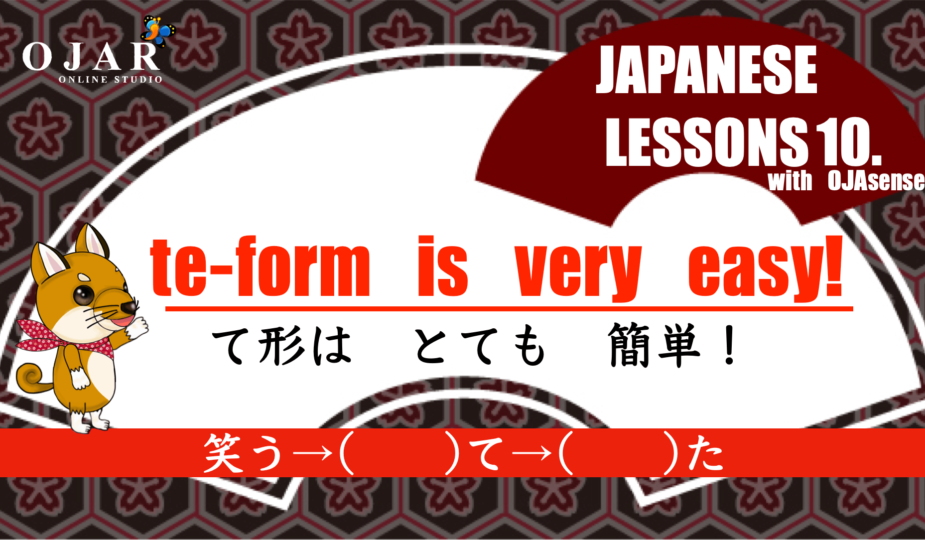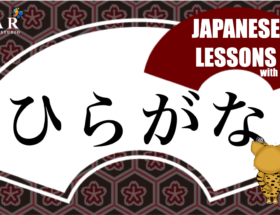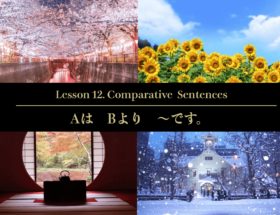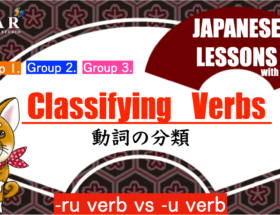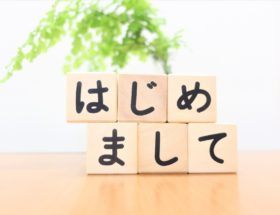Let’s learn “て形 te-form” today!
You can also learn how to make “verb + た ta” because it’s same as the “te-from” conjugation. For beginner’s level of Japanese, it’s a very important conjugation because it might decide your Japanese improvement whether you can conjugate te-form or not.
BUT, You can learn te-form with only 4 rules VERY EASILY here!
Let’s get started!
A Dictionary of Basic Japanese Grammar
| Amazon Reviews: | ★★★★★ |
|---|
Publisher: JAPAN TIMES
CONTENTS
What is particle て?
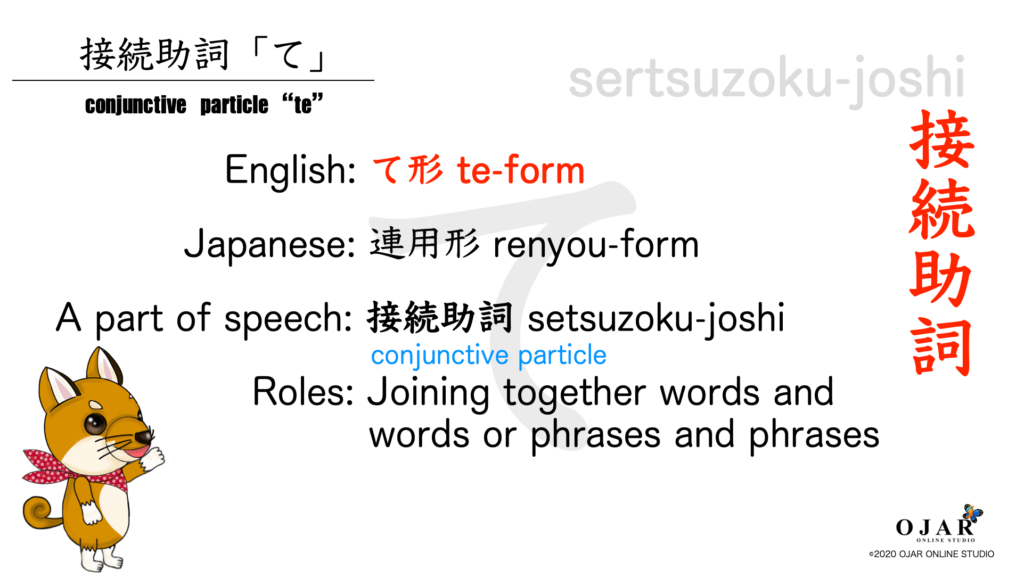
“て te” is one of particles and which is called “接続助詞 setsuzoku-joshi”. It can join verbs, adjectives or auxiliary verbs by adding “て te” to a verb.
私は 音楽を 聴いて 勉強します。
watashi wa ongaku wo kiite benkyou shimasu
I study and listen to music.
It the same role of “and” in English.
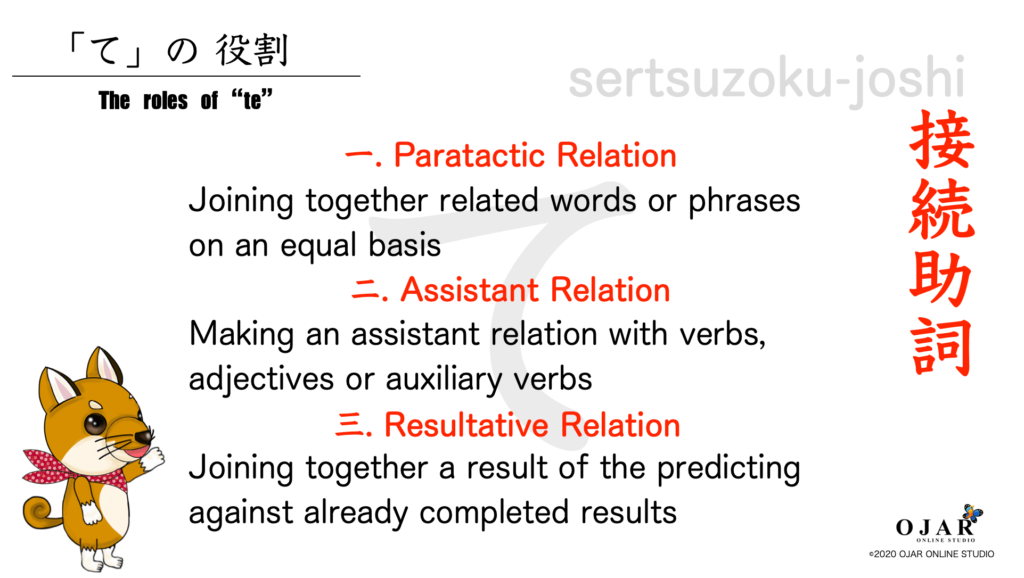
1. Paratactic Relation
“て te” joins together related words and words or phrases and phrases on an equal basis.
学校に 行って バイトにも 行った。
gakkou ni itte baito nimo itta
I went to school and I went to my part time job too.
2. Assistant Relation
“て te” makes an assistant relation with verbs, adjectives or auxiliary verbs.
この本を 見て 欲しい。
kono hon wo mite hoshii
I want you to see this book.
This form is similar to the grammar of “an infinitive” in English.
You can use this form when you want to say:
・want sb to do
Vて 欲しい
・try to do
Vて みる
3. Resultative Relation
“て te” joins together a result of the predicting against already completed results.
For example:
STEP1. completed result
I go to Starbucks.
STEP2. a result you’re going to do
I drink a cup of coffee.
STEP1+STEP2.
スタバに 行って コーヒーを 飲みます。
sutaba ni itte koohii wo nomimasu
I go to Starbucks and drink a cup of coffee.
What is particle た?
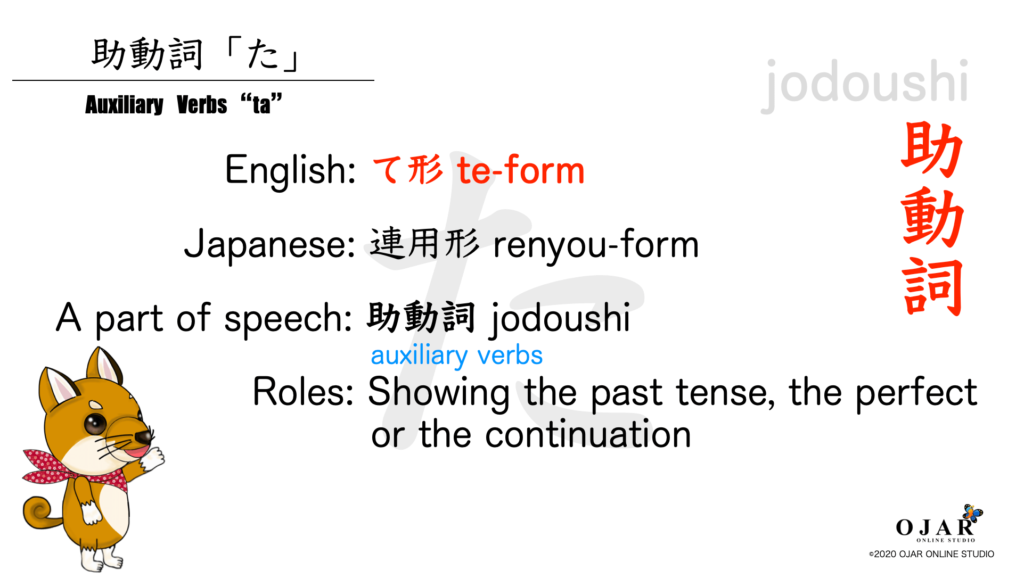
“た ta” is one of particles and which is called “助動詞 jodoushi”. It can show the past tense, the perfect tense or the continuation by adding “た ta” to a verb.
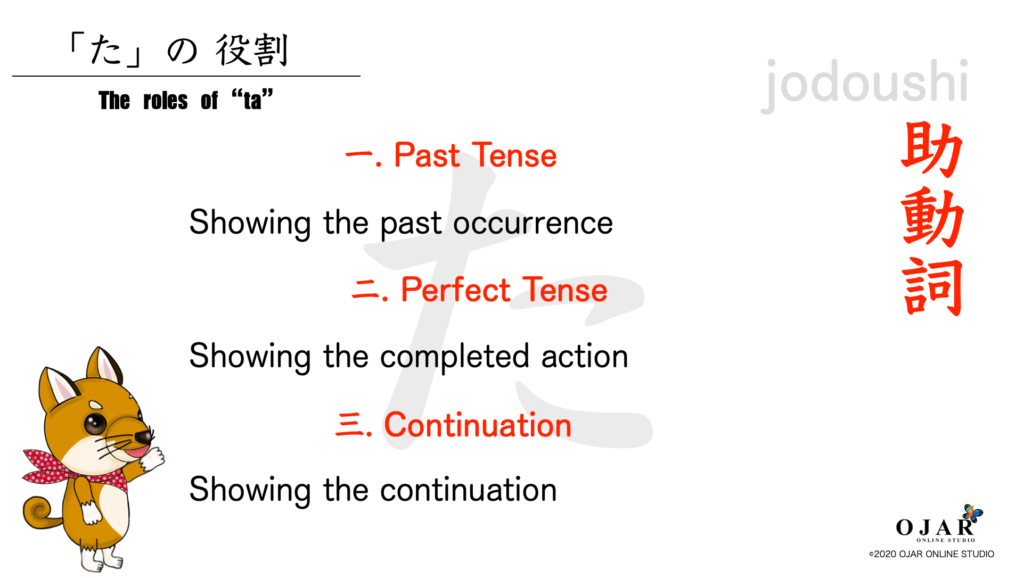
1. The Past Tense
“た ta” shows the past occurrence.
昨日 買い物に 行った。
kinou kaimono ni itta
I went shopping yesterday.
2. The Perfect Tense
“た ta” shows the completed action. There is no difference between past tense and perfect tense in Japanese like English.
もう 宿題が 終わった。
mou shukudai wo owatta
I’ve already finished my homework.
3. Showing the Continuation
“た ta” shows the continuation.
For example:
A
昨日 ノートを 買った。
kinou nooto wo katta
I bought a notebook yesterday.
B
ノートを 使った。
nooto wo tsukatta
I used the notebook.
A + B
昨日 買った ノートを 使った。
kinou katta nooto wo tsukatta
I used the notebook which I bought yesterday.
How to conjugate te-form?
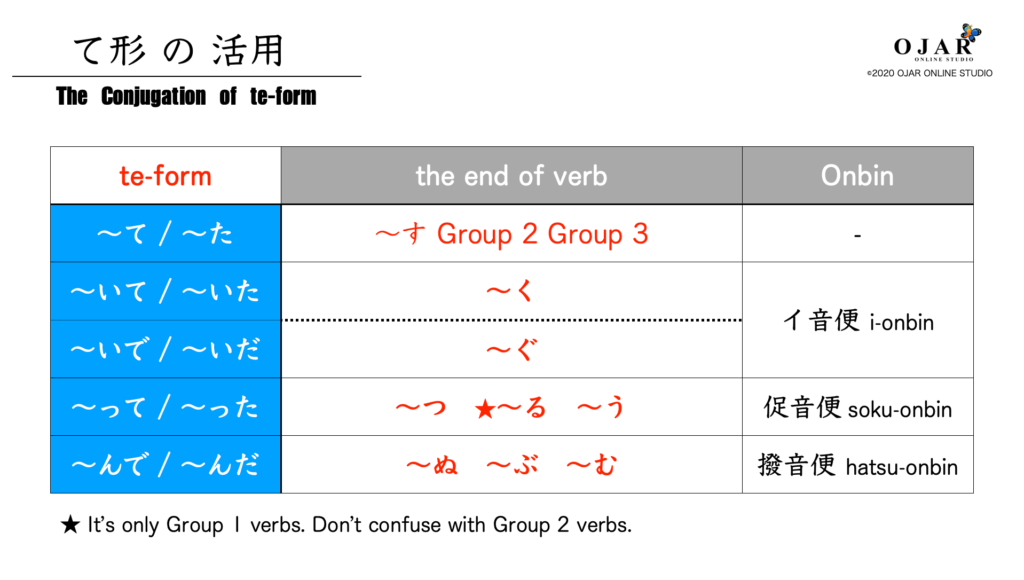
Though you might think “It’s easy. Verb + て or た right?”, te-form is usually the most difficult verb conjugations.
The reason why is that “て形 te-kei te-form” transforms 4 type of forms like “話して hanashite”, “言って itte”, “読んで yonde” and “聞いて kiite”.
Besides, “て te” sometimes becomes “で de” and “た ta” becomes “だ da” depending on a following verb.
But you can identify it easily if you focus on the end of the word of the verb!
*If you don’t know “Classifying Verbs” and “Group 1 Verb Conjugation”, you should read these articles before you go advance.
1. -i sound verb + て / た
you can make “te-form”with “Verb + て” or “Verb + た” in “~す” of Group 1, Group 2 and Group 3.
■ ~す of Group 1 Verbs
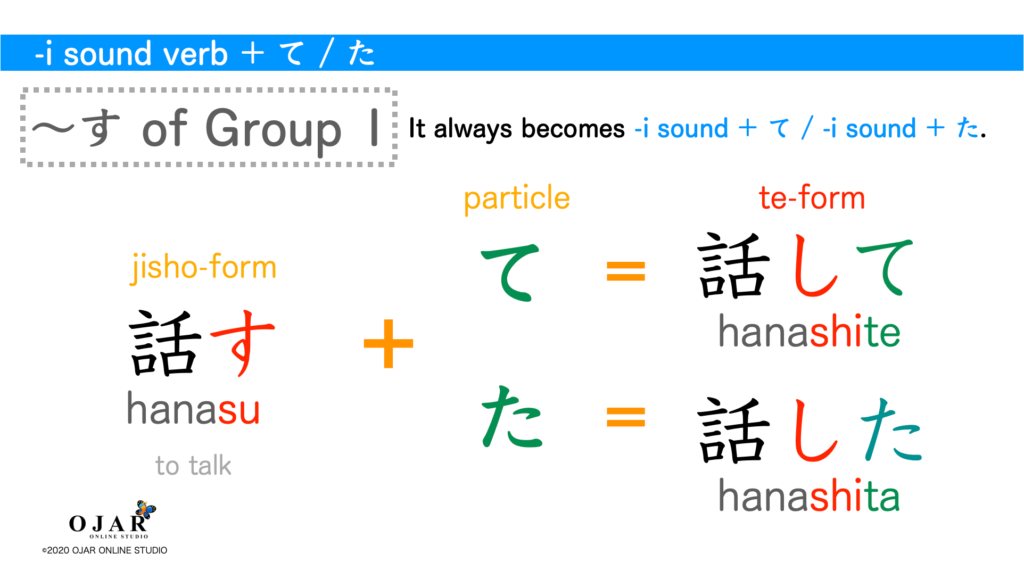
| jisho-form | te-form てver. | te-form たver. |
|---|---|---|
| 試す tamesu to try | 試して | 試した |
| 探すsagasu to search | 探して | 探した |
| 壊す kowasu to break | 壊して | 壊した |
■ Group 2 Verbs
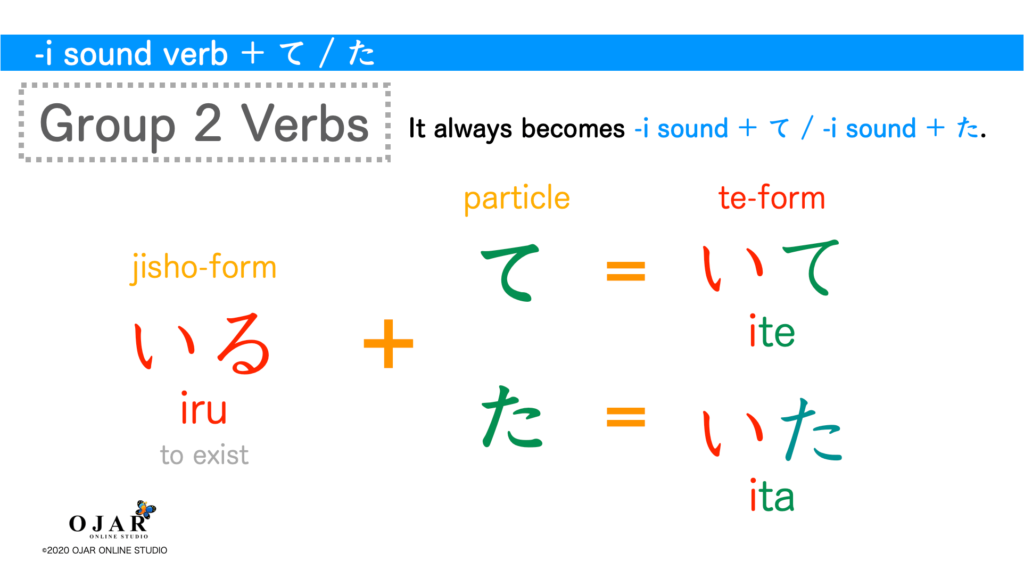
| jisho-form | te-form てver. | te-form たver. |
|---|---|---|
| 教える oshieru to teach | 教えて | 教えた |
| 消える kieru to disappear | 消えて | 消えた |
| 燃える moeru to burn | 燃えて | 燃えた |
You can check the detail conjugations of Group 2 here. ↓
■ Group 3 Verbs
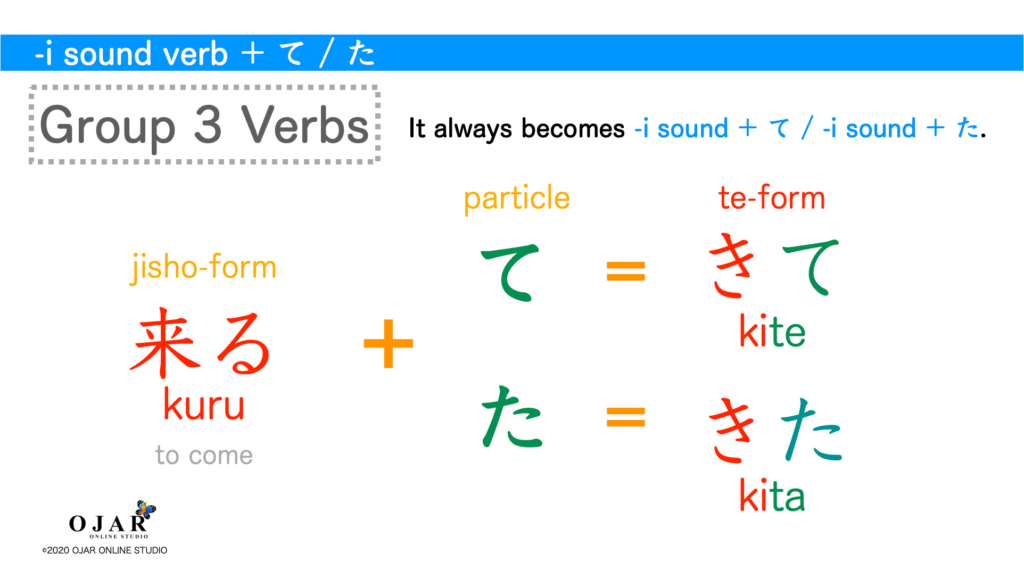
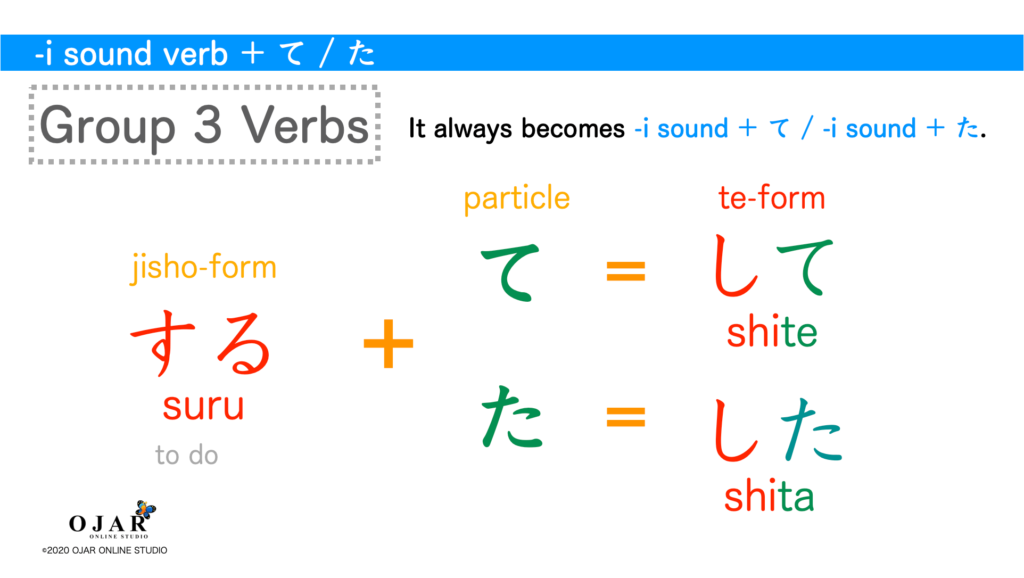
You can check the detail conjugations of Group 3 here. ↓
2. i-onbin | ~いて -ite ~いで -ide
■ ~いて -ite / ~いた -ita
“~く” of Group 1 only becomes “~いて ite” or “~いた -ita”. We learn this pronunciation as “イ音便 i-onbin”.
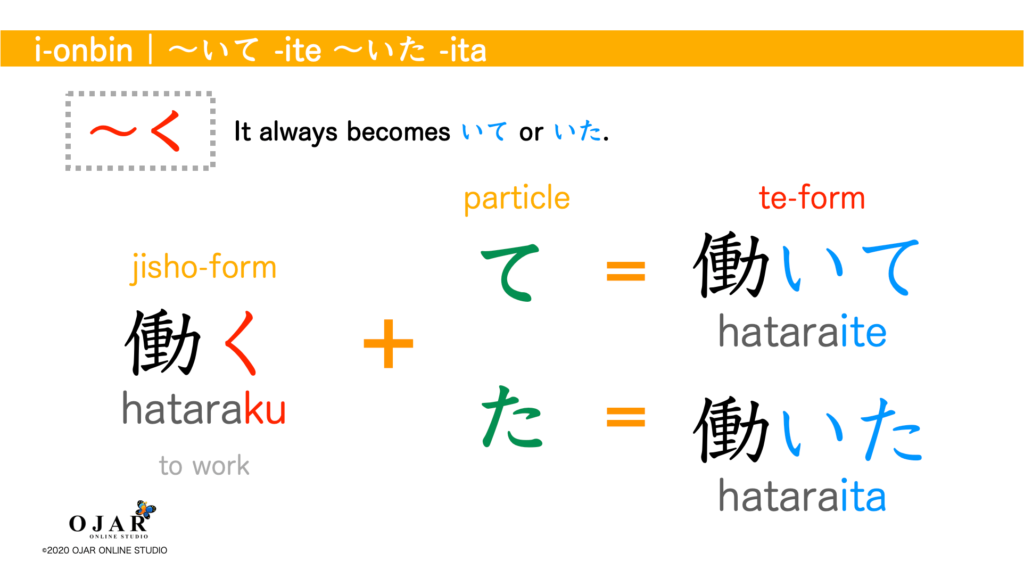
| jisho-form | te-form てver. | te-form たver. |
|---|---|---|
| 聞く kiku to hear | 聞いて | 聞いた |
| 書く kaku to write | 書いて | 書いた |
| 開く hiraku to open | 開いて | 開いた |
| 解く toku to solve | 解いて | 解いた |
・行く is an Exception
But the exception is “行く iku to go”. “行く” only becomes “行って itte” or “行った itta” in this conjugation.
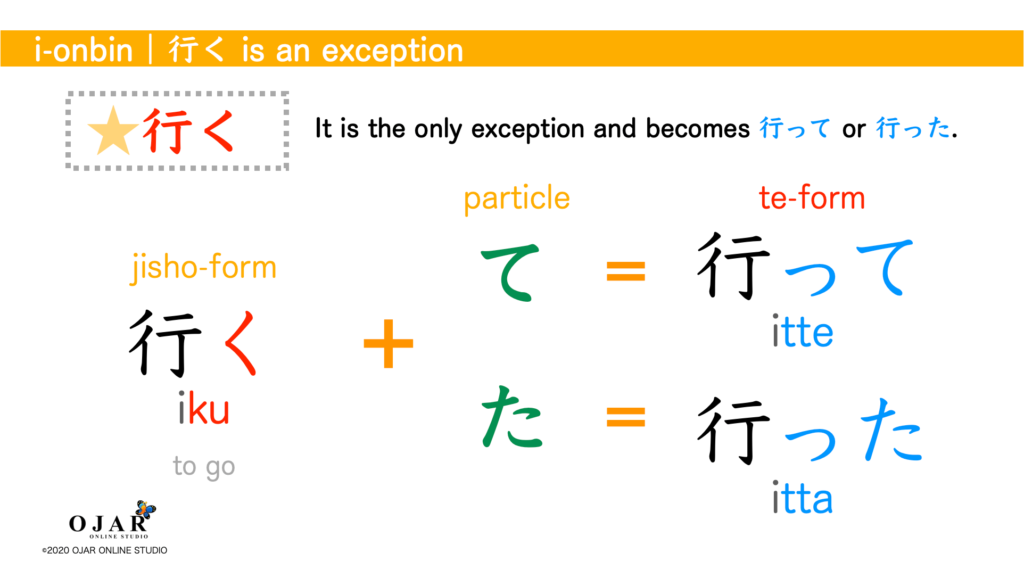
■ ~いで -ide / ~いだ -ida
“~ぐ” of Group 1 only becomes “~いで ide” or “~いだ -ida”. It is also “イ音便 i-onbin”.
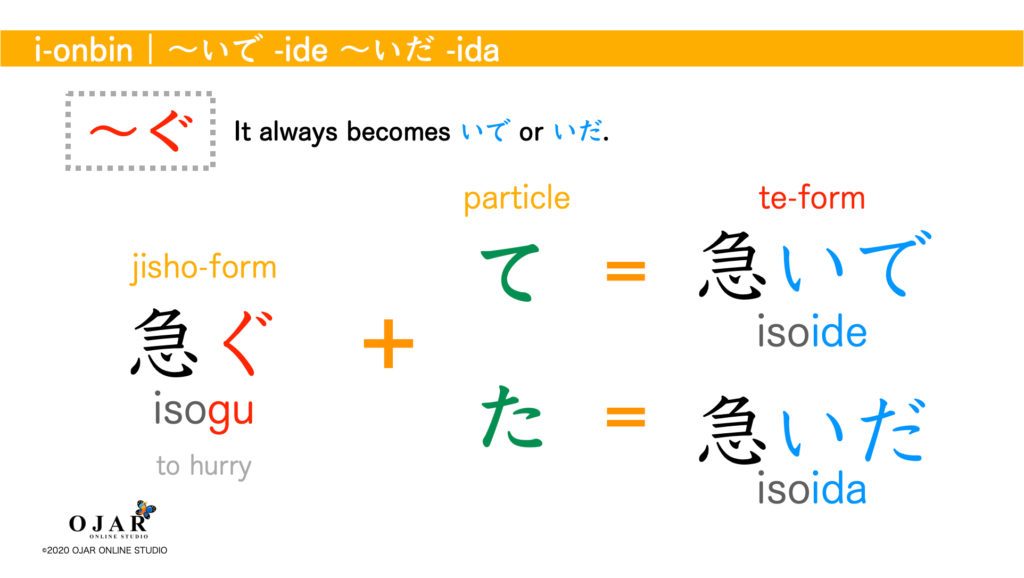
| jisho-form | te-form てver. | te-form たver. |
|---|---|---|
| 泳ぐ oyogu to swim | 泳いで | 泳いだ |
| 脱ぐ nugu to take off | 脱いで | 脱いだ |
| 注ぐ sosogu to pour | 注いで | 注いだ |
| 防ぐ fusegu to protect | 防いで | 防いだ |
| 安らぐ yasuragu to settle | 安らいで | 安らいだ |
3. soku-onbin | ~って -tte
“~つ”, “~る” and “~う” of Group 1 becomes “~って -tte” or “~った -tta”. We learn this pronunciation as “促音便 soku-onbin”.
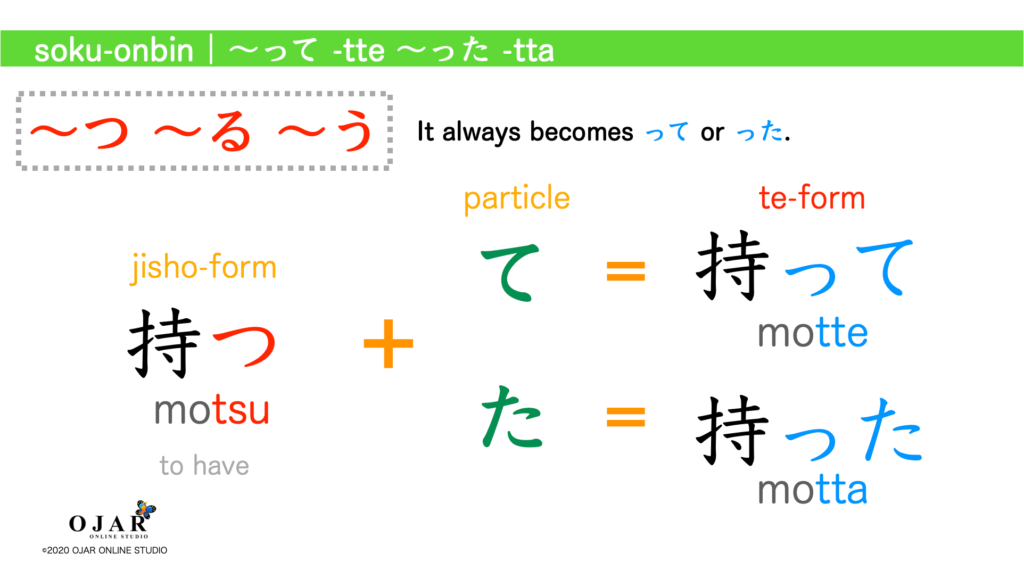
| jisho-form | te-form てver. | te-form たver. |
|---|---|---|
| 勝つ katsu to win | 勝って | 勝った |
| 待つ matsu to wait | 待って | 待った |
| 立つ tatsu to stand | 立って | 立った |
| 打つ utsu to beat | 打って | 打った |
| 育つ sodatsu to grow | 育って | 育った |
4. hatsu-onbin | ~んで -nde
“~ぬ”, “~ぶ” and “~む” of Group 1 becomes “~んで -nde” or “~んだ -nda”. We learn this pronunciation as “撥音便 hatsu-onbin”.
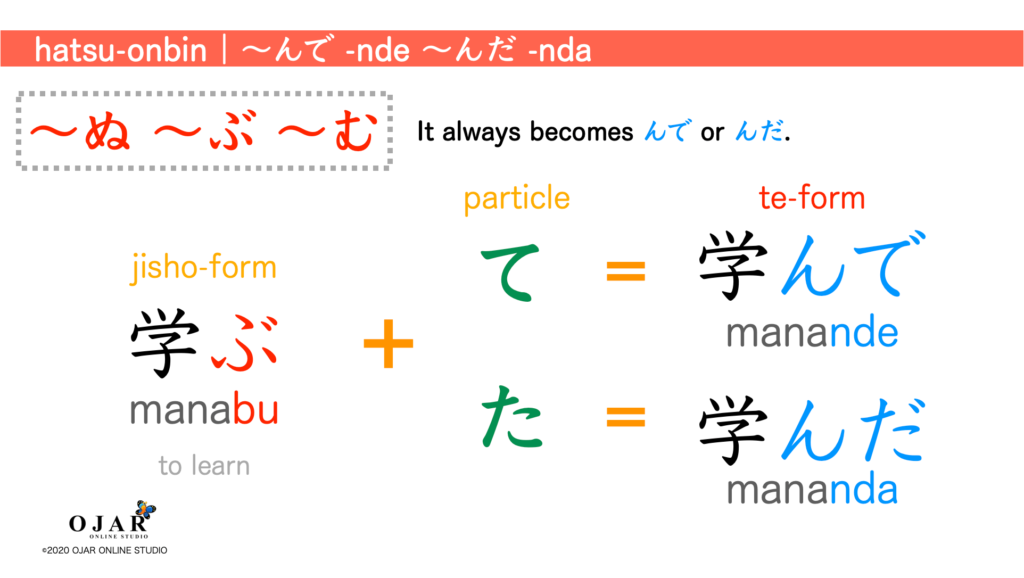
| jisho-form | te-form てver. | te-form たver. |
|---|---|---|
| 呼ぶ yobu to call | 呼んで | 呼んだ |
| 喜ぶ yorokobu to please | 喜んで | 喜んだ |
| 叫ぶ sakebu to scream | 叫んで | 叫んだ |
| 運ぶ hakobu to carry | 運んで | 運んだ |
| 飛ぶ tobu to fly | 飛んで | 飛んだ |
te-form QUIZ
Homework
Conjugate these verbs in Japanese to the comment below!
①する to do
②泣く to cry
③住む to live
Okay, that’s all for today!
Good luck with your Japanese study 😉
A Dictionary of Basic Japanese Grammar
| Amazon Reviews: | ★★★★★ |
|---|
Publisher: JAPAN TIMES
P.S. My English skill is not enough yet. Please correct me with DM from CONTACT if my English is wrong. Thank you for your cooperation!
Next Lesson is;
Japanese Lesson 20: The Difference Between に and で
Previous Lesson is; CLICK HERE!
Japanese Lesson 18: Verb Conjugation Group 3

